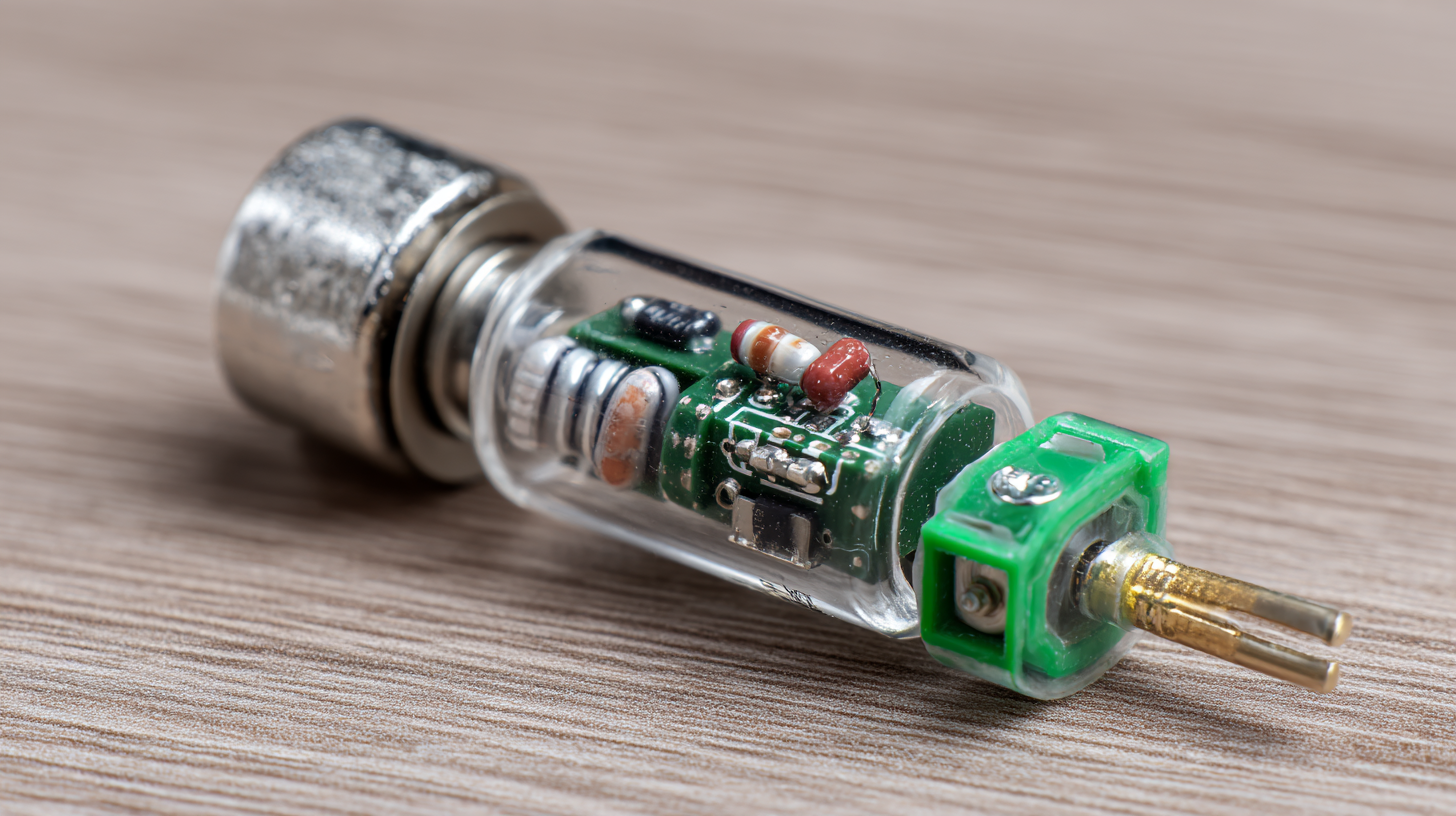
-
Home
-
Product Center
-
Application
-
Support
-
JT Cloud
-
About Us
-
Contact Us
Leave Your Message

In today's rapidly evolving technological landscape, the significance of accurate climate control cannot be overstated. With the increasing concerns over energy efficiency and environmental sustainability, implementing effective solutions becomes imperative. Temperature and humidity sensors have emerged as critical components in modern climate control systems, enabling precise monitoring and regulation of indoor environments. Renowned expert in environmental technology, Dr. Emily Carter, emphasizes this point by stating, "The integration of Temperature and Humidity Sensors into climate control systems not only optimizes energy consumption but also enhances occupant comfort."
These sensors play a pivotal role in a variety of applications, from residential settings to industrial facilities. By continuously providing real-time data, they help in adjusting heating, ventilation, and air conditioning (HVAC) systems, thus ensuring optimal conditions are maintained. The ability to monitor fluctuations in temperature and humidity levels allows for proactive adjustments, minimizing energy waste while maximizing comfort and efficiency. As we navigate the complexities of modern climate challenges, the importance of Temperature and Humidity Sensors is more pronounced than ever, revealing their essential role in creating sustainable living and working environments.

Accurate temperature measurements are crucial in the realm of climate control. By precisely gauging temperature, systems can respond effectively to environmental changes, ensuring optimal comfort levels in residential and commercial spaces. Fluctuations in temperature can lead to not only discomfort but also energy inefficiencies, as heating and cooling systems might work harder than necessary to maintain a desired climate. This inefficiency can drive up energy costs and contribute to unnecessary wear and tear on equipment.
Moreover, temperature sensors play a vital role in the smart home technology landscape. They allow for automated adjustments to HVAC systems based on real-time readings, enhancing overall energy management. With the integration of humidity sensors, these measurements become even more sophisticated, as the interplay between temperature and humidity significantly affects indoor air quality. Together, these sensors enable advanced climate control systems to create healthier living environments while simultaneously promoting energy conservation, making them indispensable in today's eco-conscious world.
Humidity sensors play a crucial role in managing indoor air quality, significantly influencing both comfort and health. By accurately measuring the moisture levels in the air, these sensors help maintain optimal humidity ranges, typically between 30% and 50%. When humidity levels are too high, it can lead to the growth of mold and mildew, causing respiratory problems and allergies. Conversely, excessively low humidity can result in dry skin and irritation to the respiratory tract. Therefore, humidity sensors are essential for preventing these issues, ensuring that indoor environments remain healthy and comfortable.
Moreover, the integration of humidity sensors into modern climate control systems allows for automated adjustments in heating, ventilation, and air conditioning (HVAC) settings. This automation not only enhances energy efficiency by optimizing how systems react to indoor conditions but also ensures consistent air quality throughout a space. By utilizing real-time data, buildings can dynamically respond to changes in humidity, providing a stable and conducive atmosphere for occupants. Overall, the importance of humidity sensors in air quality management cannot be overstated, as they directly contribute to both occupant well-being and energy conservation.
This chart illustrates the relationship between indoor humidity and temperature levels over a week. Monitoring these factors is essential for maintaining optimal indoor air quality.
The integration of temperature and humidity sensors into smart building technologies is revolutionizing climate control in modern architecture. According to the International Energy Agency, buildings account for nearly 40% of global energy consumption, making efficient climate management essential for sustainability. By utilizing advanced sensors, buildings can monitor and adjust environmental conditions in real-time, significantly reducing energy usage while enhancing occupant comfort. A report from MarketsandMarkets highlights that the market for smart building technology is expected to reach $109.48 billion by 2025, driven largely by innovations in sensor integration.

Moreover, these sensors enable predictive analytics that facilitate proactive maintenance and operational efficiencies. The ability to collect and analyze data allows building management systems to predict potential maintenance issues before they escalate, thus prolonging the lifespan of equipment and reducing downtime. According to a study by McKinsey, integrating smart technology can lead to a 30% increase in energy efficiency, directly tied to the insights gained from temperature and humidity monitoring. This not only curbs operational costs but also aligns with the growing demand for environmentally friendly building practices, highlighting the critical role of sensors in shaping the future of climate control in buildings.
Temperature and humidity sensors play a crucial role in optimizing energy efficiency strategies within modern climate control systems. According to a report by the U.S. Department of Energy, buildings account for 39% of total energy consumption in the country, and improper climate control can lead to significant energy waste. By accurately monitoring environmental conditions, these sensors enable systems to operate at peak efficiency, reducing unnecessary energy usage by up to 30%. This not only translates to cost savings for businesses and homeowners but also contributes to a reduction in carbon footprint.
Furthermore, the integration of environmental sensors facilitates advanced automation in heating, ventilation, and air conditioning (HVAC) systems. A study by the Lawrence Berkeley National Laboratory found that implementing real-time data from temperature and humidity sensors can improve HVAC efficiency by an average of 15-20%. By adjusting operations based on precise environmental data, facilities can maintain optimal comfort levels while minimizing energy expenditure. As the demand for sustainable building practices grows, the role of these sensors in energy efficiency strategies will become increasingly vital, supporting both economic and environmental goals.

The integration of temperature and humidity sensors is crucial in advancing modern climate control technology. As the global HVAC market is projected to grow significantly, reaching $1,259 billion by 2032, sensor innovation remains at the forefront of this expansion. These sensors play a vital role in optimizing energy usage and improving indoor air quality, thereby enhancing overall user comfort and operational efficiency.
Tips for implementation include ensuring that your sensor systems are equipped with AI-supported controllers, which can analyze data in real-time and adapt to changing environmental conditions. It's also essential to prioritize wireless sensor technologies, as they offer easier installation and integration into existing systems, facilitating seamless communication and data transfer.
Furthermore, emerging trends suggest a shift toward smart manufacturing powered by advanced sensors. This development can significantly impact various industries, leading to enhanced automation and improved sustainability practices. Leveraging insights from these innovations can help businesses not only meet current standards but also anticipate future needs in climate control and manufacturing processes.





